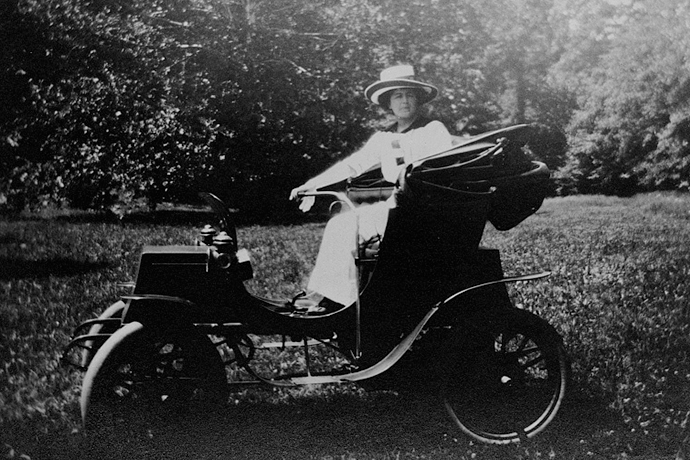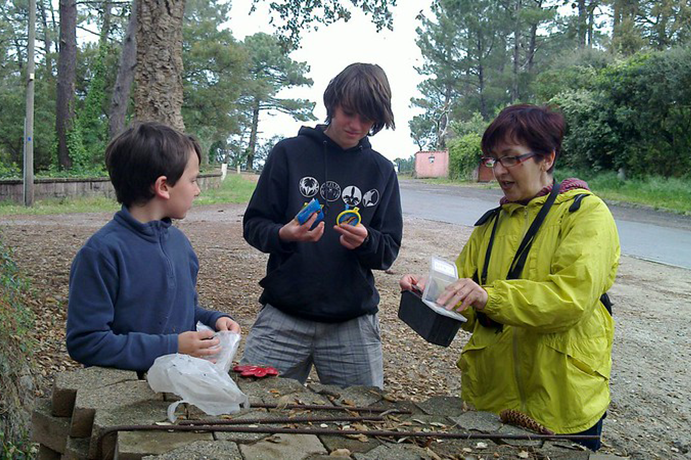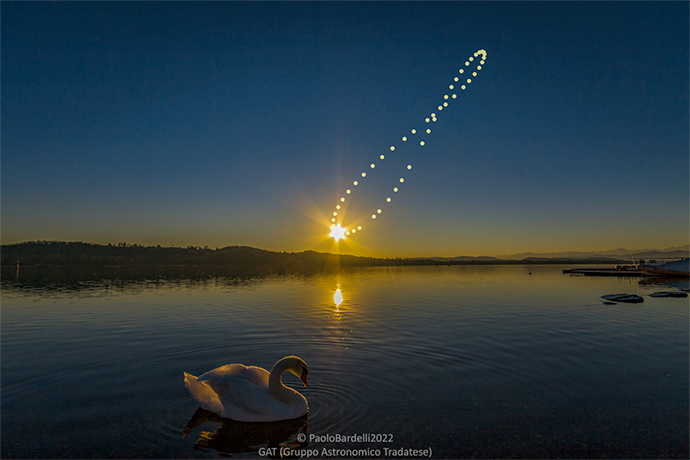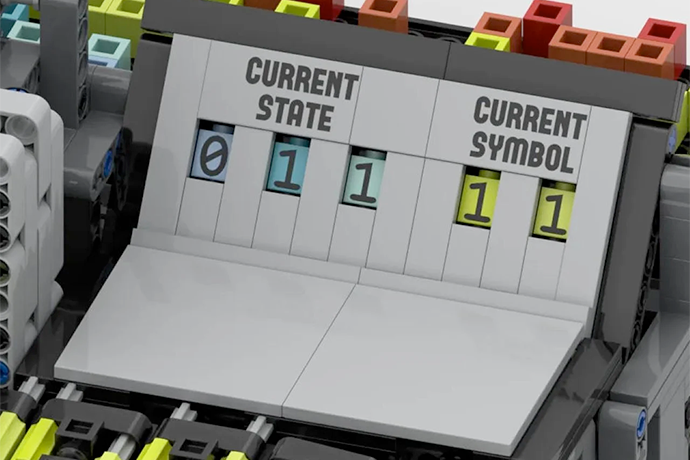1.12.1 🩻 Instructables, Electric Car History, Geology for Kids, Human Bones

Happy Wednesday. You're halfway through the week! :-) Today's email has another in my series of summer project links. This week it's the Instructables website. It's an amazing collection of DIY projects people have documented. There's also links to learn about geology, a great summer topic since you mostly have to be outdoors to explore geology. Almost everywhere I go, there's interesting rocks with a story. And probably the most interesting links this week are about the history of a two century old technology: electric vehicles. Turns out women who mostly lived in cities loved electric cars. They pushed electric vehicle development in the late 1800s and early 1900s.
Summer Projects: Instructables
The Instructables website is an amazing place for anyone who wants to create things. The website makes it easy for people to write up projects they’ve done and include photos and videos. Projects range from beginner to complex, fashion to fusion, electronics to food. It's the perfect website for kids who love to make things and take things apart to figure out how they work. Especially if they’re bored on a summer day.
Instructables didn't start as a community or a business. In 2005, it started as a documentation system for Squid Labs. They needed a place to write up their open source experimental kitesurfing project. That led to documenting other projects they were into like driveway solar panels. It quickly grew into a community of makers from around the world. People love to write up and share their fun DIY projects.
In addition to projects, the site also has contests for people to create projects. And projects are organized into grade-appropriate teaching curriculum.
Navigating the Instructables website is somewhat easy. You pick a category and that page displays filters to sort all its projects. For example, the Crafts category has a Cards filter which leads to cards you can send people as well as card games. The Crafts category also has a Cardboard filter for projects people have made with cardboard boxes and materials. The Living category has a Kids filter that, as of this writing, includes a Kids Hobbit Bed project and a Backyard Rocket Fort. It's impossible to suggest where to begin.
Instructables
https://www.instructables.com/
https://www.instructables.com/projects
https://www.instructables.com/contest/
https://www.instructables.com/teachers/
Tour de France and Technology
This Saturday, June 29th, is the first stage of the Tour de France, a 21 day bike race around France. The race begins in Florence and arrives in France on the fourth day or stage. Aside from a free tour to see how Italian and French people live — their towns, cities, houses, and also backyards! — cycling is a sport that relies heavily on technology. In addition to sturdy but lightweight bikes, riders have to excel at riding sprints, mountain stages, time trials, and cobblestones. Their physical efforts are measured in kilowatts generated, in addition to time and distance. And their bikes include radios that broadcast performance data to their teams, like satellites in outer space that phone home.
It’s also an interesting race because it’s multiple races in one. Over 2100 miles raced in 21 days (plus 2 rest days) there’s also races to win the most points for the mountain stages, the sprints, best young rider, and of course each stage. And that’s in addition to winning the entire race. This year, the big story is whether or not the sprinter Mark Cavendish can win a historic 35th stage win. He's 39. The nearest sprinter with wins has 16, last I checked.
If you're interested to watch, unfortunately you have to search online to find out who broadcasts for your country. In the US, it's usually been NBC Sports. Netflix also has a documentary series that covers last years race which I find really interesting and revealing. It's called Tour de France: Unchained. The French title is more accurate, Au Coeur du Peloton, In the heart of the Peloton.
The History of Tour de France Bike Tech
https://www.theproscloset.com/blogs/news/tour-de-france-bike-tech-history
20 Years and Counting: How The Bikes of the Tour de France Have Changed by Matt Stephens
https://www.welovecycling.com/wide/2023/07/01/20-years-and-counting-how-the-bikes-of-the-tour-de-france-have-changed/
How Do They Go So Fast? The Technology Behind the Tour de France
https://www.engineering.com/story/how-do-they-go-so-fast-the-technology-behind-the-tour-de-france
The Tour de France: A Catalyst for Technological Advancements in Cycling
https://aerocloud.io/blog/the-tour-de-france-a-catalyst-for-technological-advancements-in-cycling/
How to Build Up a Bike
https://www.instructables.com/How-to-Build-Up-a-Bike/
Tour de France Website
https://www.letour.fr
Tour de France: Unchained
https://www.netflix.com/title/81153133
History of Electric Cars
Today’s electric vehicles (EVs) are a reincarnation of technology that dates back to the 1820s and 1830s. That's 200 years ago. That surprised me. Gasoline powered cars only replaced electric cars in large part because rural parts of the US didn't have electricity until the 1930s. But they did have access to oil which had been discovered and made widely available in the early 1900s to 1930s.
“Electric cars have been around a lot longer than today’s Tesla or even the General Motors EV1 of the late 1990s. In fact, electric cars appeared long before the internal-combustion sort, and dreamers have never stopped trying to make them work both on the road and as a business proposition. A lack of historical perspective sometimes leads to misunderstandings of how things came to be as they are now, so let’s take the long view of the road that got us here.
We start in the 1830s, with Scotland’s Robert Anderson, whose motorized carriage was built sometime between 1832 and ’39. Batteries (galvanic cells) were not yet rechargeable, so it was more parlor trick (“Look! No horse nor ox, yet it moves!”) than a transportation device. Another Scot, Robert Davidson of Aberdeen, built a prototype electric locomotive in 1837. A bigger, better version, demonstrated in 1841, could go 1.5 miles at 4 mph towing six tons. Then it needed new batteries. This impressive performance so alarmed railway workers (who saw it as a threat to their jobs tending steam engines) that they destroyed Davidson’s devil machine, which he’d named Galvani.
Batteries that could be recharged came along in 1859, making the electric-car idea more viable. Around 1884, inventor Thomas Parker helped deploy electric-powered trams and built prototype electric cars in England. By 1890, a Scotland-born chemist living in Des Moines, Iowa, William Morrison, applied for a patent on the electric carriage he’d built perhaps as early as 1887. It appeared in a city parade in 1888, according to the Des Moines Register. With front-wheel drive, 4 horsepower, and a reported top speed of 20 mph, it had 24 battery cells that needed recharging every 50 miles. Morrison’s self-propelled carriage was a sensation at the 1893 Chicago World’s Fair, also known as the famed World’s Columbian Exhibition. Morrison himself was more interested in the batteries than in mobility, but he’d sparked the imagination of other inventors.”
Worth the Watt: A Brief History of the Electric Car, 1830 to Present
https://www.caranddriver.com/features/g43480930/history-of-electric-cars/
The History of the Electric Car
https://www.energy.gov/articles/history-electric-car
Electric Vehicles Have Been Around Since the 19th Century: Timeline
https://www.history.com/news/electric-vehicles-automobiles-timeline
History of the Electric Vehicle
https://en.wikipedia.org/wiki/History_of_the_electric_vehicle
Almost everything will work again if you unplug it for a few minutes, including you.
― Anne Lamott
How Many Bones are in the Human Body?
Human infants typically have 270 bones, fusing into around 206 in the human adult. Variability in number arises from some bones' anatomic variations. Bones differ in size, shape, and strength, depending on function.
National Institutes of Health
https://www.ncbi.nlm.nih.gov/books/NBK537199/
List of bones of the human skeleton
https://en.wikipedia.org/wiki/List_of_bones_of_the_human_skeleton
This Week
Our Sunday issue this week has fun often offbeat links about 3D printing pills, an AI mind reader, NASA doing moon walk training in Arizona, a massive fluffy planet, the history of calorie counting, and more.







Member discussion